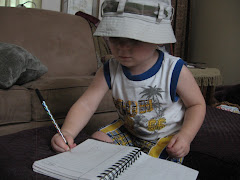1. BIBLIOGRAPHY
Lin, Grace. THE YEAR OF THE DOG. New York: Little, Brown, and Company, 2006. ISBN 0316060003.
2. PLOT SUMMARY
When Pacy finds out that it is the Year of the Dog, which is a good year for making friends and “finding yourself,” she decides to find out exactly who she is going to be when she grows up. She makes a new best friend when another Taiwanese girl comes to her school, and she finds out more about her close-knit family, but as she tries to figure out who she is supposed to be, she hits one snag after another, from losing the science contest, to talking herself out of trying out for the lead in the play. Pacy is afraid she will never figure it out. She doesn’t seem to be very good at anything. But just as time is running out on this Year of the Dog, something happens and she suddenly knows exactly what she will do with her life.
3. CRITICAL ANALYSIS
This first novel by prolific children’s author and illustrator is a delightful read. Told in first person from elementary-aged Pacy’s point of view, the reader will find stories within the story as Pacy’s mom and other friends or relatives stop to tell a story. “Did I ever tell you about Grandma and the paper piano?” Pacy’s mother asks. Then in a different font, a story is launched, including its title “The Paper Piano.” Pacy learns about her family through these stories, most of which help Pacy learn about her history and help her clarify confusions she has about who she is. Is she “Chinese,” “Taiwanese,” or “American”? Why is has her name been Pacy all her life until she starts school where suddenly she is now known as Grace? Her loving parents help her start to sort through some of the issues she has with being from a parallel culture.
Included throughout the novel are line drawings which Lin has included in just the right places to help the reader picture what the story is about. Children who are Chinese or Taiwanese will see themselves in these pictures of how to draw a dog for the Year of the Dog, what a New Year Tray looks like, and what the symbols for “tiger” and “pig” look like that Grandma painted on Pacy’s neck. Children who are not from these cultures will have a deeper understanding of what Pacy’s family is like.
Cultural markers are included throughout, again to the benefit of Chinese American children as well as those from other cultures. Sayings are directly translated in the same sentence or the following one. “ ‘Gong xi-gong xi! Xin Nian hao!’ they said. ‘Happy Chinese New Year!’ ” Pacy’s family eats foods like roasted duck, fried rice with pink shrimp, golden brown dumplings, steamed buns “that looked like enormous marshmallows,” New Year candy, and pan fried fish. They participate in the Red Egg party for baby Albert, and combine traditions from both Chinese holidays and American holidays as they celebrate Thanksgiving and Christmas. The cultural markers are woven naturally and easily into the story, with enough description of each to help the reader understand anything that is unfamiliar, without going overboard and making the book feel didactic.
In an “Author’s Note” at the end of the story, readers find out that this book is inspired by Lin’s life, and while it’s “mostly true” some things did get “switched around and mixed up.” Readers age 8-12 will particularly enjoy this novel. It would be a lovely first chapter book for the readers at the younger end of the scale.
4. REVIEW EXCERPTS
*Publishers Weekly: “Lin creates an endearing protagonist, realistically dealing with universal emotions and situations," in this "autobiographical tale of an Asian-American girl's sweet and funny insights on family, identity and friendship.”
*Booklist: “Lin does a remarkable job capturing the soul and the spirit of books like those of Hayward or Maud Hart Lovelace, reimagining them through the lens of her own story, and transforming their special qualities into something new for today's young readers.”
*School Library Journal: “This is an enjoyable chapter book with easily identifiable characters.”
5. CONNECTIONS
• Lin invites readers to find out which parts of her book are exactly true and which are not. Have students go to her web page to find out which is which. www.gracelin.com
• Have students write about an incident in their lives, punctuating the story with simple drawings. Which parts of their story would most benefit from drawings to help the reader understand?
• Grace Lin’s husband Robert died a few years after they were married from cancer. Before his death, Grace wrote a book called Robert’s Snow about a mouse who wasn’t allowed to play in the snow. Later, she and Robert created a fundraiser where they bought 150 flat wooden snowflakes and asked their children’s book artist friends to paint them. They auctioned them off, raising over $100,000. View some of the snowflakes, then have students create some. Students might even want to participate in the 2010 Robert’s Snowflakes for Cancer Cure by donating to the Dana-Farber Cancer Institute http://www.gracelin.com/content.php?page=family_robert
GUEST POST: Chris Baron on SPARK
7 months ago



No comments:
Post a Comment